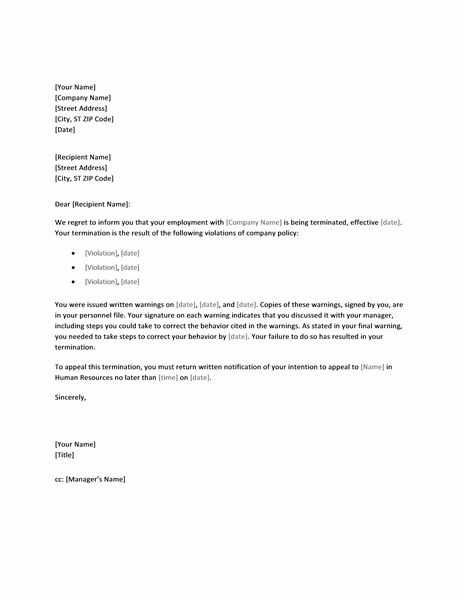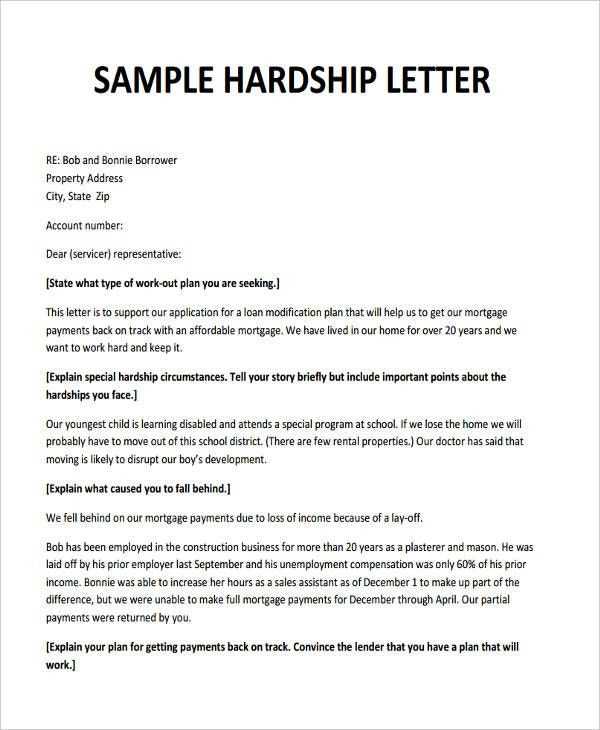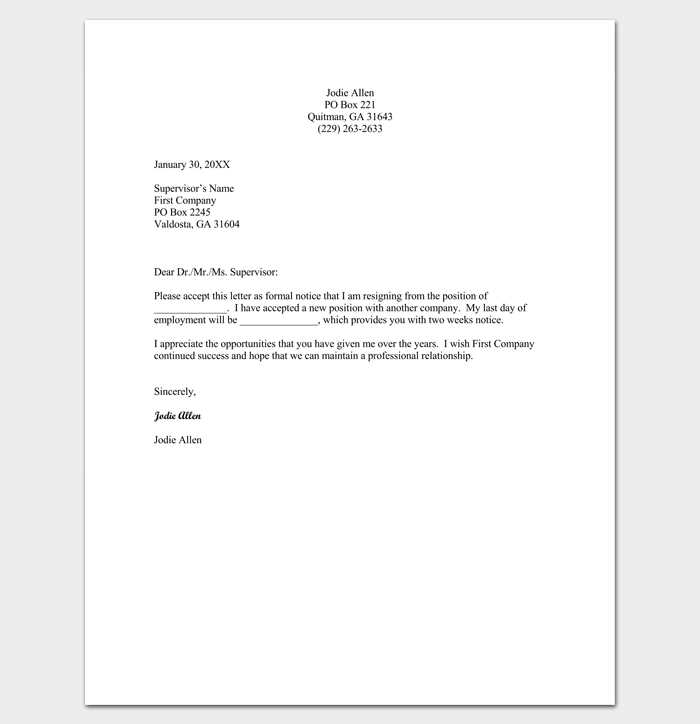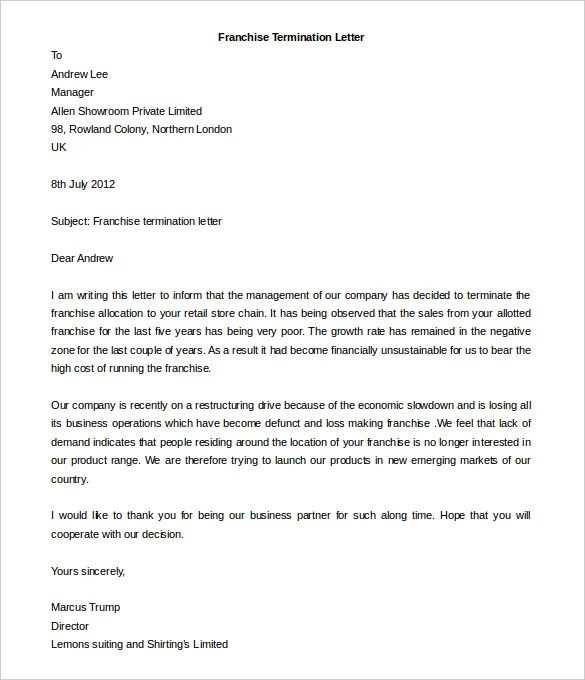How to Create a Professional Lay Off Template Letter

Ending an employee’s contract is never easy, but it’s an important aspect of business management. Communicating such a decision in a clear, respectful, and legally sound manner is essential for both the employer and the employee. Having a structured document for this purpose can make the process smoother and reduce the potential for misunderstandings or legal complications.
A well-crafted communication ensures that the message is delivered with professionalism, while also offering the employee the necessary details about the decision. It can also help manage the emotional and logistical aspects of the situation. Clear wording, proper formatting, and consideration of the legal implications are critical elements that should not be overlooked.
In this section, we will explore how to effectively draft such a document, including what should be included, the language to use, and how to personalize it for your specific situation. Whether you are an employer or an HR professional, understanding the right way to handle this type of communication will contribute to a more respectful and efficient transition process.
Why Use a Termination Notice Format

When faced with the difficult task of ending an employee’s role, having a pre-structured document can make the process significantly easier and more effective. This approach helps ensure that the message is clear, respectful, and covers all necessary points. By using a consistent structure, you reduce the risk of forgetting important details and can communicate the decision professionally.
Consistency and Professionalism
A standardized approach helps maintain a consistent tone across all communications. This consistency is crucial for establishing trust and ensuring that all employees, regardless of the circumstances, are treated equally. Using a predefined format ensures that each document aligns with company policies and legal requirements, reducing the likelihood of errors.
Efficiency in Communication
Time is often of the essence when managing transitions in a business. A structured document allows you to quickly adapt and customize the content for each situation without missing key information. By streamlining the process, you can focus on other important tasks while ensuring that the necessary communication is handled appropriately.
Essential Information to Include in the Notice
When informing an employee about the termination of their role, it’s important to provide clear and comprehensive information. Including the right details in the communication can help the employee understand the decision and the steps that follow. A well-structured notice addresses both the emotional and practical aspects of the situation, ensuring that all critical points are covered.
| Key Information | Description |
|---|---|
| Date of Notification | Specify the date when the decision is communicated to the employee. |
| Reason for Termination | Clearly outline the reasons behind the decision, whether business-related or performance-based. |
| Effective Date | State the date when the termination will take effect, allowing the employee time to prepare. |
| Severance or Benefits | Provide information regarding any compensation, benefits, or assistance offered post-termination. |
| Next Steps | Outline any further actions the employee needs to take, such as returning company property or attending an exit interview. |
Step-by-Step Guide to Writing the Notice

Creating a formal notification regarding the end of an employee’s role requires careful attention to both the content and tone. The following steps will help guide you through the process, ensuring that you address all key points while maintaining a professional and respectful approach. Each step is designed to ensure clarity and provide the employee with all necessary information.
Begin by clearly stating the purpose of the communication, including the date when the employee’s role will conclude. It’s crucial to explain the reasoning behind the decision, whether it’s business-driven or performance-based, in a direct yet empathetic manner. Afterward, specify any relevant details such as severance or benefits, and provide information on any required actions that the employee should take before the termination becomes official.
End the notice with an offer of support, if applicable, such as assistance with job placement or information on unemployment benefits. Ensure the tone remains respectful and professional throughout, focusing on providing clarity and maintaining a positive relationship for the future.
Legal Guidelines for Employee Terminations
When terminating an employee, it is crucial to follow legal guidelines to ensure compliance with employment laws and avoid potential disputes. Understanding the rights of the employee, as well as the responsibilities of the employer, is key to handling such situations appropriately. Failure to adhere to legal requirements can lead to costly legal battles and damage to the company’s reputation.
There are several key legal aspects that must be considered during the process:
- Notice Period: In many cases, employees are entitled to advance notice before their termination takes effect. The length of this notice can vary based on company policy or local labor laws.
- Severance Pay: Some jurisdictions require employers to provide severance pay based on the length of employment or contractual obligations.
- Discrimination Laws: It is illegal to terminate an employee based on race, gender, age, disability, or other protected characteristics. Ensure that the decision is free from bias.
- Unemployment Benefits: In certain cases, employees may be eligible for unemployment benefits after their position ends. Informing them about the application process is important.
- Documentation: Keep thorough records of the reasons for termination, communication with the employee, and any supporting documents to protect the company in case of legal disputes.
By adhering to these guidelines, employers can help mitigate legal risks and foster a fair and transparent termination process. It’s always recommended to consult with a legal professional to ensure full compliance with local and national laws.
Tips for Maintaining Professionalism in Notices

When delivering difficult news, it’s essential to maintain a professional and respectful tone. The way you communicate can significantly impact how the employee perceives the decision and the company’s reputation. By focusing on clarity, empathy, and professionalism, you can ensure that the message is both effective and considerate.
Here are some tips to help you maintain professionalism in your communications:
- Be Clear and Direct: Clearly state the reason for the decision while avoiding unnecessary details that could confuse or overwhelm the recipient.
- Use Respectful Language: Choose words that convey empathy and understanding, even when delivering negative news.
- Avoid Emotional Tone: Keep the tone neutral and avoid letting personal emotions influence the message. The focus should be on the facts.
- Provide Support Information: Offer any available resources, such as severance packages or job search assistance, to help the employee during the transition.
- Follow Company Policy: Ensure that all communications align with the company’s established policies and practices regarding terminations.
By following these guidelines, you can deliver the necessary information with dignity and professionalism, helping to minimize the emotional impact and maintain a positive work environment.
How to Customize a Termination Notice
Every employee’s situation is unique, and a standard format may need to be adjusted to reflect specific circumstances. Customizing your communication ensures that the message is relevant, clear, and appropriate for the individual receiving it. While a basic framework is useful, tailoring the content to include relevant details and company-specific information will create a more personalized and professional message.
Personalize the Content
Start by including the employee’s name, role, and department to make the notice feel more personal. This helps the recipient understand that the communication is intended specifically for them, rather than being a generic message. You can also mention specific achievements or contributions during their time with the company, as this can provide a more empathetic tone to an otherwise difficult communication.
Adjust the Reason and Offer Support
Clearly state the reason for the termination and ensure that it is tailored to the employee’s specific situation. Whether the decision is based on performance, restructuring, or other factors, providing a clear explanation will help minimize confusion. If appropriate, offer assistance with job placement, career counseling, or information about severance. This can demonstrate that the company values the employee and is committed to their transition process.
Handling Difficult Conversations After a Termination
After informing an employee about the end of their role, it’s crucial to manage any follow-up discussions with care and professionalism. The employee may experience a range of emotions, from confusion to frustration, and it’s important to approach these conversations with empathy and a clear focus on resolution. The way you handle these discussions can have a lasting impact on the employee’s perception of the company and their future interactions with it.
Key Considerations for Effective Conversations
Here are some strategies to consider when engaging in difficult conversations post-termination:
- Be Empathetic: Acknowledge the emotional impact the decision may have on the employee. Show understanding and offer a space for them to express their feelings without interruption.
- Be Clear and Transparent: Ensure that all details are thoroughly explained, including reasons for the decision and any next steps. Avoid vague or conflicting statements.
- Maintain Respectful Boundaries: While it’s important to listen, it’s equally important to keep the conversation respectful and focused on resolving immediate concerns, such as next steps and severance details.
Offering Support and Solutions
After addressing the immediate concerns, offer practical assistance to ease the transition. Here are some ways to help:
- Provide Resources: Offer information on severance packages, unemployment benefits, and job placement services if available.
- Stay Available for Questions: Let the employee know they can reach out if they have further questions or need clarification in the days ahead.
- Encourage Professional Growth: If possible, suggest resources or networks that might help them find new opportunities in their field.
By approaching these difficult conversations with care, respect, and a focus on solutions, you can help the employee navigate this challenging time with greater confidence and clarity.